Circular Product
We are the trusted partner for those who are ready to lead with purpose, integrating true circularity and material health into every stage of the product lifecycle. We transform environmental challenges into opportunities for innovation.
-
1
The only C2C Certified® advisor in Iberia
-
+ 200
Companies advised worldwide
-
+ 10000
Certified products in different sectors
Certifications
Declarations
Consulting
Certifications
EIG is an accredited organisation for product assessment under the C2C Certified™ Products programme.
The Cradle to Cradle (C2C) Certified® Products Program
With more than a decade of experience, it has helped more than 200 companies innovate and optimise more than 10,000 materials and products according to the world's most advanced scientific criteria, and align their business strategy, operations and collaborations through common sustainability goals throughout the value chain.This is the most ambitious and practical international certification for designing and manufacturing healthy, circular and responsible products. It provides a sustainable, multi-attribute management framework based on innovation and continuous improvement.
Managed and developed by the Cradle to Cradle Products Innovation Institute (*C2CPII), the Cradle to Cradle Certified Product Standard brings together the technical and performance requirements that products must meet in order to obtain certification, organised into five categories.
What is the process for certifying a product with C2C Certified®?
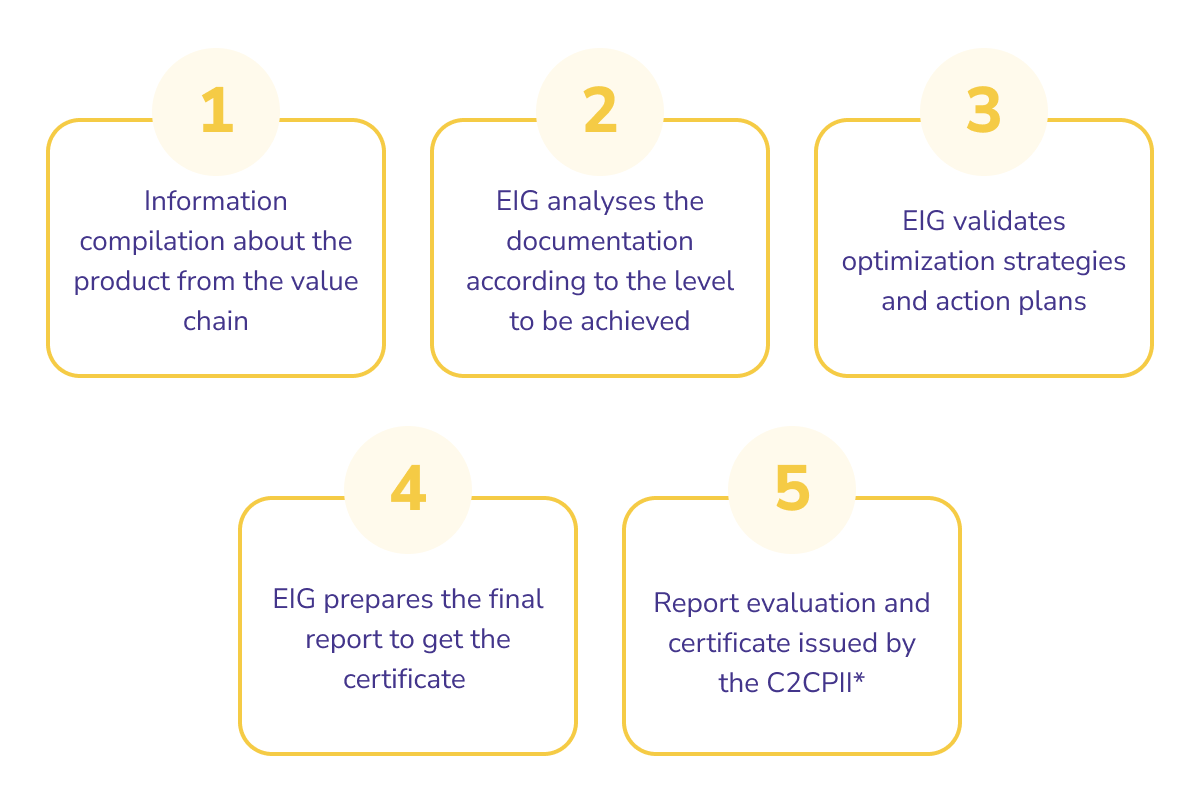
Cradle to Cradle Certified® Full scope V. 4.1
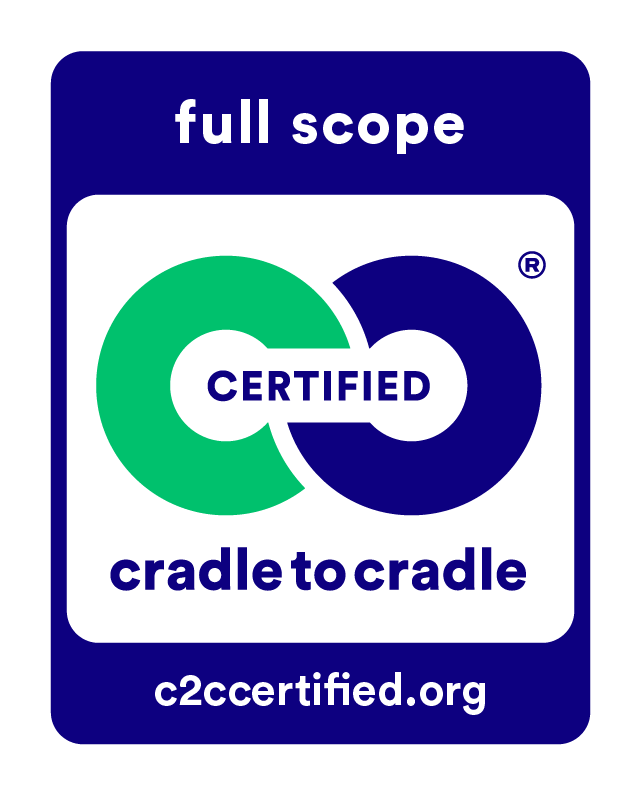
What is it for?
- Comprehensive verification of sustainable product performance.
- As a third-party verified assessment, it provides credibility to regulators, consumers, and investors.
- Guarantee of transparency and authenticity by proving that the product and its manufacture comply with the principles of sustainability, circularity and social responsibility of the standard.
Benefits
- Identify Opportunities for Improvement and Innovation: In materials, processes and business models.
- Verified Transparency and Reinforced Trust: Through recognition by other standards such as LEED or WELL.
- Competitive Advantage: Faced with demanding markets and with conscious consumers.
- Alignment with ESG objectives: Contributes to meeting corporate ESG goals.
Related projects
C2C Certified® Material Health Standard
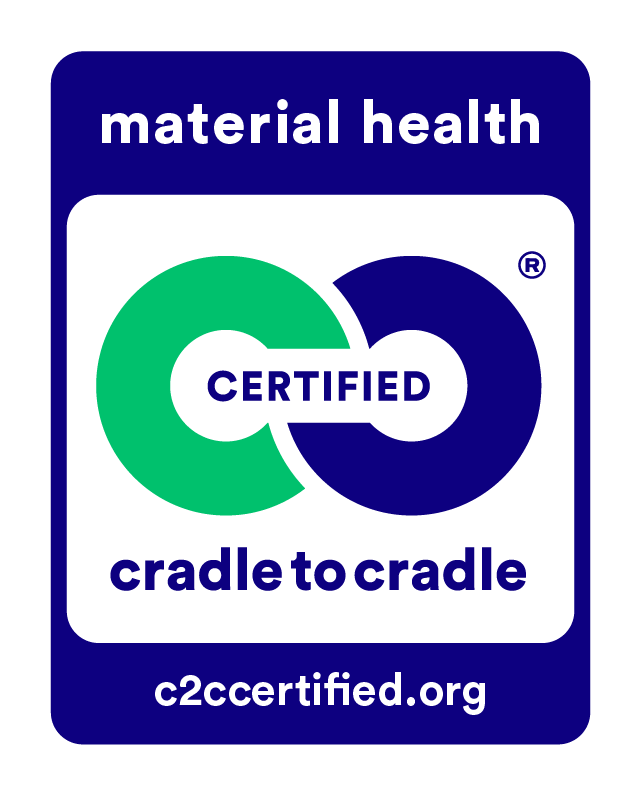
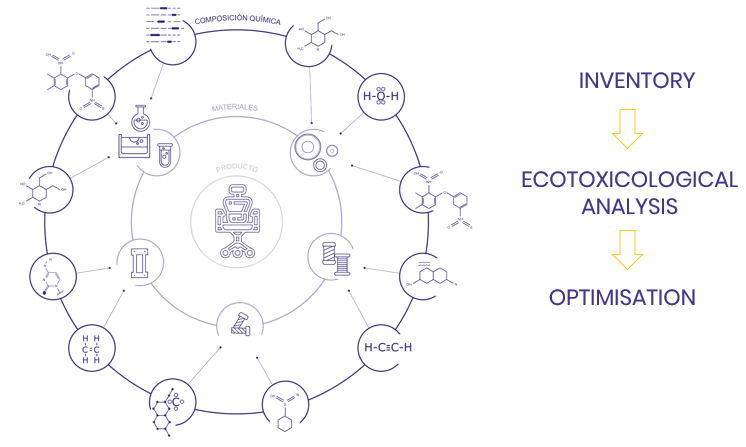
¿Para qué sirve?
- Comprehensive Chemical Evaluation: Which allows the chemical safety of components to be analyzed by identifying hazardous substances.
- Making Informed Decisions: To create safe and responsible products for people and the planet.
- Encourages the Use of Safer, Healthier, and More Sustainable Components.
- Transparency in the Value Chain: By facilitating communication about chemical compositions.
- Beyond Regulatory Compliance: Seeks to anticipate regulatory restrictions.
Benefits
- Starting Point: To achieve Full Scope C2C Certified® Certification.
- Optimizes Chemical Composition: Improving safety for people and the planet.
- Improves Transparency and Engagement in the Supply Chain.
- Regulatory Compliance: Facilitates compliance with future regulations and international standards such as LEED or WELL.
- In-Depth Knowledge: Of the risks and health implications of materials.
Related projects
C2C Certified® Circularity

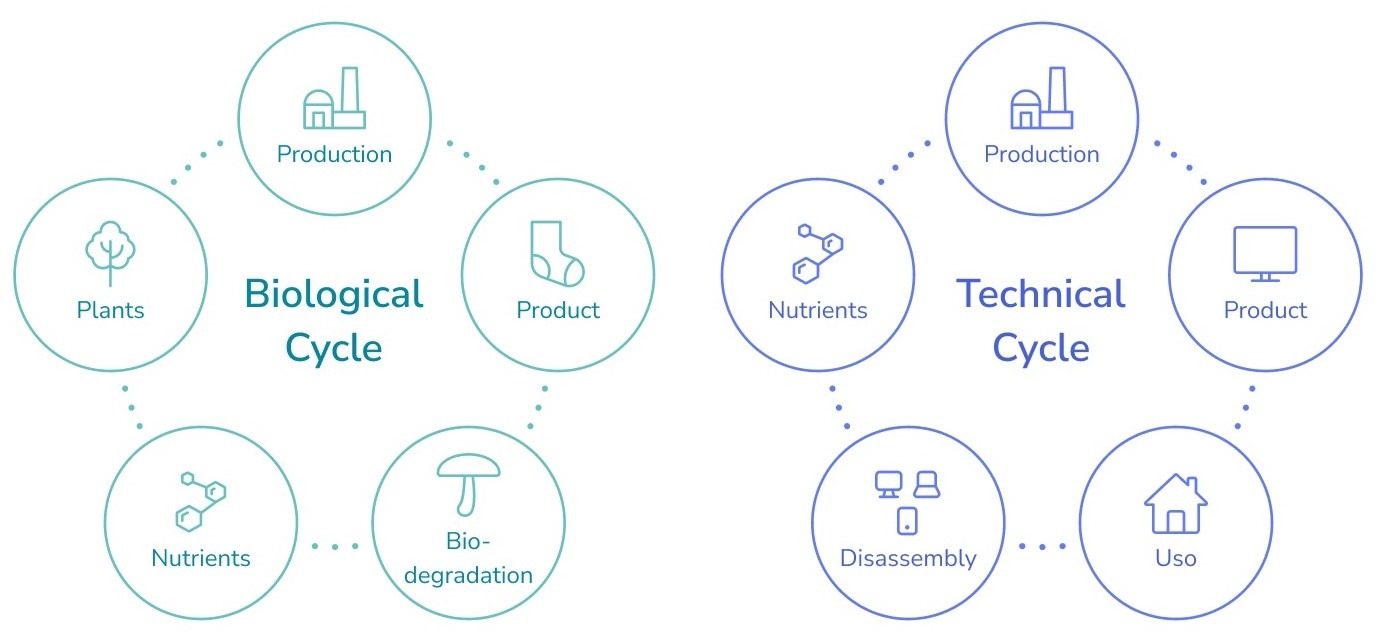
What is it for?
- Circularity Accreditation: To demonstrate concrete progress in circular design.
- Progressive Improvement: Acts as a tool for continuous improvement.
- Identification of Opportunities: Facilitates the detection of areas where materials, processes and business models can be optimized towards more circular practices.
- Verified Communication: Provides a trusted endorsement of the company's circularity statements.
Benefits
- Promotion of Circular Design: Promotes the development of circular products from their conception.
- Innovation: Identifies opportunities for improvement in design, selection of materials, systems and business models to increase circularity.
- Transparent Supply Chain: Increases visibility and understanding of material flows.
- Regulatory Alignment: Facilitates compliance with international regulations and standards, such as the Digital Product Passport (DPP).
Declarations
DAP / EPD - Environmental Product Declaration
A declaration that assesses the environmental impact of products in accordance with ISO 14025. EPD is a third-party verified type III declaration on the environmental impact of the entire life cycle of products.What is it for?
- Quantified Communication: Of the results of the life cycle analysis.
- Transparency and Verified Impact Information: For informed decision-making.
- Objective Comparison: Of products that fulfill the same function, based on verified data.
- Market Access: And to international certifications such as LEED, BREEAM and HQE.
Benefits
- Regulatory Compliance: Requirements related to the evaluation and disclosure of environmental impacts of products.
- Basis for Certifications: Foundation for the certification of sustainable products.
- Enhanced Credibility: Enhances reputation by providing transparent, third-party verified environmental information.
- Identification of Improvements: Reveals areas of opportunity to optimize the environmental performance of the product.
DPP - Digital Product Passport
The Digital Product Passport (DPP) is a key tool in the circular economy that provides detailed information on the complete product lifecycle. It includes data on its origin, composition, production processes, use, maintenance, recycling and final disposal. It works as a digital document that accompanies the product throughout its useful life, facilitating circular decisions at each stage of its life cycle.What is it for?
- Integral Traceability: On its composition and production.
- Information Transparency: On all the actors of the value chain.
- Informed Circular Decision Making: By the different actors.
- Regulatory Readiness: Facilitates compliance with EU Digital Product Passport regulations.
Benefits
- Risk Management and Improved Adaptation Capacity: In the face of regulatory changes.
- Circularity: Significantly improves end-of-life value recovery by reporting on composition and management pathways.
- Enhanced Corporate Communication: Provides verifiable data to support sustainability claims.
- Competitive Differentiation: Responds to the growing demand for transparency from customers and clients.
Critical review of Life Cycle Assessment
It is the independent evaluation of a Life Cycle Assessment (LCA) study carried out by a third party, in accordance with recognized standards such as ISO 14071 and the GHG Protocol Product Life Cycle Accounting and Reporting Standard.Análisis
This process meticulously examines:- The methodology,
- The data used,
- The assumptions and
- The conclusions of the study
What is it for?
- Technical Quality Assurance: Ensures that the LCA is transparent, consistent and technically robust.
- Validation of Communications: Supports the credibility of the results for external communication.
- Decision Support: Provides confidence that results are reliable to inform strategic decisions.
Benefits
- Increased Credibility: By having an external validation carried out by independent experts.
- Stuty Improvement: Identifies areas for improvement and recommendations to optimize the quality of future LCAs.
- Demonstrable Transparency: Evidence of the organization's commitment to truthfulness and rigor in its environmental assessments.
Consulting
C2C Certified® Feasibility Study
It is a technical consulting service that performs a comprehensive diagnosis of the product and the company, contrasting with the requirements of each category of the C2C Certified® standard, to determine how aligned or not the company or product is to begin the certification process; and if they are going to start it, identify which are the most critical points in which to work on.What is it for?
- Circularity Assessment: Analyzes the current state of design, production processes, materials, and business models.
- Opportunity Identification: Detects specific areas where improvements can be implemented.
- Prioritization of Actions and Resources: Establishes a logical and feasible order of interventions according to their potential impact and its technical and economic feasibility.
- Roadmap: Established on where and how to act to begin the certification process.
Regulatory alignment: ESPR and EPR
Regulatory Alignment: ESPR (Ecodesign Regulation for Sustainable Products)
We accompany in the process of analysis, understanding and compliance with the Ecodesign Regulation for Sustainable Products (ESPR). This European Union regulation establishes binding requirements to improve the environmental performance and circularity of products placed on the European market. Through a regulatory and technical analysis of the product and its processes, gaps are identified, as well as opportunities to incorporate principles of circular design, traceability and efficiency in the use of resources.What is it for?
- Regulatory Compliance: With the mandatory criteria of the ESPR.
- Strategic Adaptation: Of the organization, its products and sector to respond effectively to regulatory changes.
- Gap Identification: To align with ESPR requirements.
- Defined Roadmap: To implement changes in products and processes.
Benefits
- Competitive Anticipation: It allows you to anticipate to regulatory requirements, gaining an advantage over competitors.
- Promotion of Innovation: Catalyzes the development of innovative solutions in circular eco-design.
- Access to the European Market: Guarantees continuity in the marketing of products in the EU, avoiding regulatory barriers.
- Cost Optimization: Identifies opportunities to reduce environmental impacts, while improving resource efficiency.
Regulatory Alignment: EPR (Extended Producer Responsability)
Strategic and regulatory consulting service to help companies comply with the requirements of the Extended Producer Responsibility, a legal framework that obliges producers to take on the management of the life cycle of their products, especially in the post-consumer phase. The service includes compliance diagnosis, analysis of specific obligations by sector and country, design of collection strategies, recovery, traceability and reporting.What is it for?
- Assured Legal Compliance: As well as minimizing the risks of sanctions and operational interruptions.
- Circular Optimization: Leverages obligations to improve product circularity and waste management.
- Territorial Adaptation: Develops specific solutions according to the different EPR regulations applicable in different countries and regions.
Benefits
- Ensures Business Continuity: In territories with strict EPR regulations and facilitates entry into new markets.
- Strategic Regulatory Anticipation: With time, avoiding emergencies and costly improvisations.
- Long-Term Resilience: Promotes the adaptability of the company in the face of a demanding regulatory framework that is constantly evolving.
- Promotion of Innovation: Promotes improvements in eco-design and materials to facilitate their management at the end of their useful life.
Net Positive Impact Product Consulting
Advanced consulting service that guides companies in the transformation of their products. We accompany companies at any point in their journey:- From the first steps towards a more sustainable product.
- Until they generate a net positive impact on the environment.
What is it for?
- Redefinition of Purpose and Vision of the Product: So that it generates tangible benefits for the society and the environment.
- Regenerative Design: Products that restore, renew, or revitalize their own energy sources and materials.
- Comprehensive Impact Assessment: Both of positive and negative impacts throughout the entire product value chain.
- Differentiation Strategy: Product positioned at the forefront of sustainable innovation.
Benefits
- Access to New Green Markets and Sustainable Financing.
- Alignment to Growing Demand: From consumers and investors for products that actively contribute to solving social and environmental challenges.
- Regulatory Anticipation: To future regulatory frameworks that will require more regenerative product models.
- Talent Attraction: Facilitates the recruitment and retention of professionals with a regenerative vision.
Implementation
Trainings
Specialized training program designed to equip multidisciplinary teams with the knowledge, tools, and methodologies necessary to effectively implement circular economy principles in product development.What is it for?
- Internal Capacity Building: Strengthens the team's competencies to implement and manage CE initiatives autonomously.
- Organizational Alignment: Establishes a common language and conceptual framework on CE between different departments.
- Acceleration of Implementation: Facilitates the practical application of CE principles in real projects.
- Culture of Innovation: Encourages a systematic and circular thinking approach that drives creativity and the search for disruptive solutions.
Benefits
- Technical Autonomy: Empowers teams to identify and capture CE opportunities internally.
- Project Efficiency: Minimizes errors by providing proven CE tools and methodologies.
- Accelerated Results: Allows you to achieve sustainability and circularity goals faster by having a better prepared team.
Circular Design Guide
It is a strategic tool developed to measure for each organization, in which a guide is designed to translate the theoretical approaches of the Circular Economy into concrete and applicable guidelines, adapted to the sector, type of product and specific context of the company, thus promoting sustainable and innovative solutions in all phases of design and development.What is it for?
- Process Standardization: Establishes common criteria and methodologies for incorporating the CE into projects.
- Practical Guidance: Provides concrete indications on how to implement the CE in design decisions.
- Knowledge Transfer: Facilitates the transmission of experience and best practices between different teams.
- Evaluation Framework: Offers criteria for assessing and comparing design alternatives from a circularity perspective.
Benefits
- Targeted Innovation: Channels creativity into solutions that maximize circularity and long-term value.
- Reduction of External Dependencies: Decreases the need for continuous consulting by integrating knowledge into the organization.
- Adaptation to the Specific Context: Offers practical solutions adapted to the technical, economic and cultural context of the company.
- Process Streamlining: Accelerates the design and development phase by providing clear guidelines and pre-validated solutions.
Product Circularity Data Sheet (PCDS)
It is a sheet designed to standardize the data of circular products, to improve transparency. It provides clear, verifiable and standardized information on how a product is designed and manufactured, covering its entire life cycle. It is based on ISO 59040 and is verified to ensure validity.What is it for?
- For your Clients and Partners: To be able to transmit transparent and reliable information about the circular nature of the product.
- To Comply with Regulations: By having pertinent product information already identified and compiled in a single document.
- To obtain certifications: That require verifiable data, found in the PCDS.
- Neutrality: The PCDS is a report with verified data. It does not score or advise on circularity but rather serves to get suppliers to do so.
Benefits
- Regulatory Compliance: The PCDS declarations will be auditable to comply with the requirements (EPDs, DPPs, certifications, regulations).
- Information Standardization: Provides verifiable information about how a product is designed and manufactured.
- Facilitates Decision Making: By having the most relevant product information in the same document to be able to identify the best decisions.